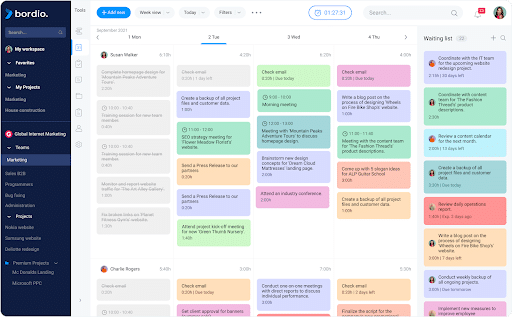Remote work is no longer just a perk offered by a few forward-thinking companies or a temporary measure in unprecedented times. It’s an evolving landscape that demands adaptability, strategic planning, and proper tools. If you want to adapt and excel in this environment, here are 15 tips to guide your transition.
1. Understand Your Motivation
Every journey starts with understanding its purpose. Is it about tapping into a global talent pool, ensuring safety amidst global crises, or aiming for flexibility to boost employee morale? Pinpointing your core reasons will help tailor your approach, address challenges head-on, and communicate the purpose to your team.
2. Laying a Robust Infrastructure
Transitioning isn’t just about moving tasks online; it’s about creating a virtual office as effective as the physical one. This begins with:
- A Reliable Internet Connection: A seamless online experience reduces frustrations and boosts productivity.
- A Dedicated Workspace: Encourage your team to designate a distraction-free area at home that mentally signals ‘work mode.’
- Right Hardware: Depending on job roles, this might include ergonomic furniture, dual monitors, quality headphones, and more.
- Specialized Software: Dive into tools specific to your industry, whether design, coding, finance or any other sector.
3. Seamless Communication is Vital
The essence of a successful remote team lies in its communication. Use platforms that best mimic in-person conversations. Video calls should be the norm for team meetings, as they offer a more personal touch. Additionally, establish clear guidelines on when to use emails, chats, or calls, optimizing communication efficiency.
4. Implementing Project Management Systems
With a dispersed team, the importance of top project management tools cannot be overstated. These platforms keep everyone in sync, allow easy project tracking, and ensure deadlines are met. The right tool will be your virtual workspace, where every team member can see their tasks, responsibilities, and progress.
5. Routine and Structure Matter
While remote work offers flexibility, a semblance of routine is necessary. Encourage a structured day that mirrors a typical office routine. This includes starting the day at a set time, scheduled breaks, and a definite log-off time to prevent burnout.
6. Elevate Cybersecurity Protocols
Cyber threats are ever-present, and remote work can often amplify vulnerabilities:
- Frequent System Updates: Stay ahead of potential threats by ensuring all software and systems are updated.
- Employee Training: Equip your team with knowledge on recognizing threats, scams, and phishing emails.
- Use of VPNs: These tools encrypt data, making it challenging for unauthorized individuals to access sensitive information.
7. Embrace Continuous Learning

With the digital landscape constantly evolving, staying updated is non-negotiable. This might mean enrolling in online courses, attending webinars, or simply dedicating time to learn a new tool that can make tasks more efficient.
8. Foster a Sense of Community
Physical distance can sometimes lead to emotional distance. To counteract this, organize virtual team-building exercises, coffee chats, and other activities that nurture team cohesion and maintain a strong company culture.
9. Emphasize Flexibility
One of remote work’s main attractions is its inherent flexibility. Understand and respect that team members might have varying home situations or be in different time zones. Flexibility in work hours or deadlines can lead to enhanced productivity and job satisfaction.
10. Collaboration is King
Beyond just communicating, tools that facilitate collaboration can make team projects feel cohesive. Real-time document editing, brainstorming platforms, and shared calendars are examples.
11. Stay Rooted in Company Culture
Ensure your company’s core values, mission, and culture remain intact. Celebrate achievements, recognize birthdays, and uphold company traditions, even if they’re now done virtually.
12. Set and Communicate Clear Expectations
With the lack of physical supervision, clarity in tasks and deliverables is paramount. Ensure that goals, deadlines, and responsibilities are clear, leaving no room for ambiguity.
13. Prioritize Mental and Emotional Well-being
Acknowledge the unique challenges of remote work. Regular check-ins about personal well-being, ensuring workload balance, and promoting healthy work habits can go a long way in maintaining a happy and productive team.
14. Welcome Feedback and Iterate
The transition is a journey, not a destination. Encourage team feedback, understand pain points, and be ready to adapt your strategies and tools accordingly.
15. Periodically Review Your Tech Stack
With rapid technological advancements, what’s cutting-edge today might be obsolete tomorrow. Stay updated with the latest tools and software to add value to your remote working setup.
Concluding Thoughts
Making a smooth shift to remote work isn’t just about using the right tools—it’s about fostering a mindset that values flexibility, communication, and continuous learning. With these comprehensive tips, you’ll be well-equipped to create a thriving remote environment, unlocking new levels of efficiency and team satisfaction.






































